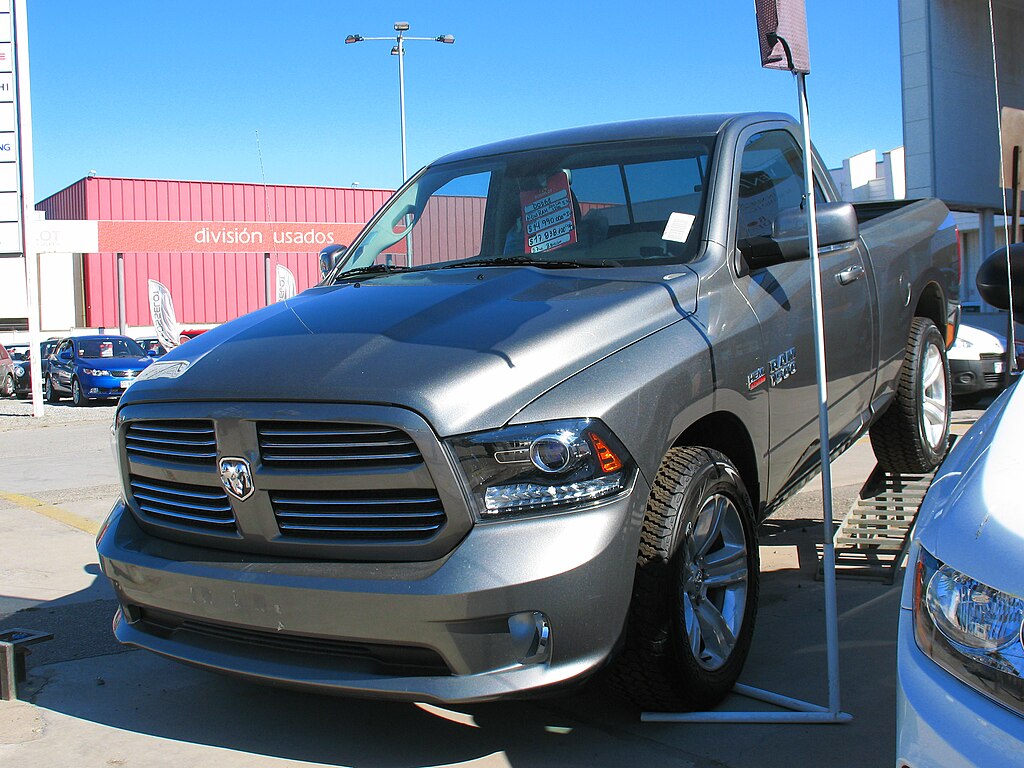Refueling your Ram 1500 shouldn’t feel like a hassle, but frequent pump shutoffs or slow filling times can make it an irritating task. These issues are often linked to problems in the venting system, filler neck, or even the gas station pump itself.
Fortunately, identifying the root cause can help you fix the problem quickly. Let’s explore the common causes and practical solutions to make refueling simple again.

1. Overly Sensitive Fuel Nozzle Interaction
Ram 1500 owners, particularly those driving 2009–2018 models, often struggle with the gas pump shutting off unexpectedly.
One key reason is that the pump nozzle’s sensitivity clashes with the truck’s filler neck design. In some cases, the angle or shape of the filler neck causes the pump to sense back pressure and shut off prematurely.
When you’re at the station, a simple place to start is by adjusting the position of the nozzle. Inserting the nozzle slightly less into the filler opening or tilting it at a different angle can help.
If that doesn’t work, try another pump or station—certain nozzles are more prone to cutting off. Also, check the pump’s vapor recovery boot to ensure it isn’t too rigid or blocking airflow around the filler neck.
If the boot is stiff, relocating the nozzle a bit can prevent it from sealing too tightly and triggering the auto-shutoff feature.
2. EVAP Venting or Vapor Canister Problems
Issues with the EVAP (Evaporative Emission Control) system, which helps manage fuel vapors, can also cause fueling troubles in the Ram 1500.
A blocked vent line or a failing charcoal canister can cause back pressure during refueling, tricking the pump into shutting off.
Blocked or Clogged Vent Lines
Debris, dirt, or even spider webs can collect in vent lines, particularly if the truck sits for extended periods or frequently drives in dusty conditions.
Pinched hoses can also limit vapor flow. If you suspect this, look at the lines near the tank for signs of kinks or buildup.
Gently using compressed air to clear minor blockages can restore normal flow. If the vent hose is cracked or deeply clogged, replacing it is your best bet.
Malfunctioning Charcoal Canister
The charcoal canister traps fuel vapors before they reach the atmosphere, but it can become saturated if the system has seen too many overfills or if liquid fuel seeps in.
A strong fuel smell near the canister, visible cracks, or charcoal granules leaking out are signs of trouble. Dropping the tank shield or partially lowering the tank may be necessary to get a good look.
If the canister is compromised, replacing it is often the only reliable fix. To prevent repeat issues, it’s also a good idea to verify that related EVAP valves operate correctly.
3. Filler Neck and Rollover Valve Concerns
Filler Neck Damage or Corrosion
A bent, dented, or rusted filler neck can restrict fuel flow to the point where the pump keeps clicking off. On older or high-mileage Ram 1500 trucks, corrosion can eat away at the metal, creating an uneven surface inside the neck.
This uneven surface can trick the pump’s auto-shutoff mechanism by momentarily pushing fuel back toward the nozzle. If you suspect damage, inspect the filler neck from underneath the truck.
Look for any signs of flaking metal, rust holes, or dents that might narrow the passage. If the metal is severely compromised, swapping out the entire filler neck assembly is often more cost-effective than attempting patchwork repairs.
Stuck Rollover / Check Valve
Modern fuel systems incorporate a rollover valve to prevent fuel from spilling if the vehicle flips. This valve sits within or near the filler neck and can jam due to debris or a failing spring.
When it sticks, it can hinder airflow, leading to back pressure and sudden pump shutoffs. Gaining access may require partially removing the filler assembly.
Once exposed, check the valve for dirt or signs of mechanical failure. If gentle cleaning or lubrication cannot free the valve, replacing it ensures proper venting and helps prevent repeated shutoffs at the gas pump.
4. Fuel Tank Pressure or Emissions System Issues
The fuel tank may build excessive internal pressure in some Ram 1500 trucks, particularly those with EVAP system components that aren’t venting correctly.
This extra pressure can trigger the pump’s automatic shutoff sooner than expected. Symptoms might include a sudden release of vapors when you open the gas cap or codes like P0446 or P0451 that point to problems in the purge or vent valves.
If you suspect a vent valve is jammed or not receiving the proper signal, an OBD-II scan can help identify error codes tied to the EVAP system. Replacing or repairing these valves often resolves tank pressurization troubles and restores normal fueling behavior.
Remember that even minor EVAP faults can cascade into more noticeable symptoms at the pump, so tackling them early is a good way to avoid drawn-out refueling sessions.
Final Thoughts
A gas pump that keeps shutting off on your Ram 1500 is often the result of venting, filler neck, or valve issues. Adjusting the nozzle angle can sometimes offer a quick workaround, but addressing worn or clogged components is the real fix.
Inspecting vent lines, checking the charcoal canister, and ensuring the filler neck is free of damage can help ensure a smooth refueling experience. Focusing on these areas allows you to enjoy a faster, more reliable fill-up and spend less time fighting with the pump.
Was This Article Helpful?

Rami Hasan is the founder of CherishYourCar.com, where he combines his web publishing experience with a passion for the automotive world. He’s committed to creating clear, practical guides that help drivers take better care of their vehicles and get more out of every mile.
